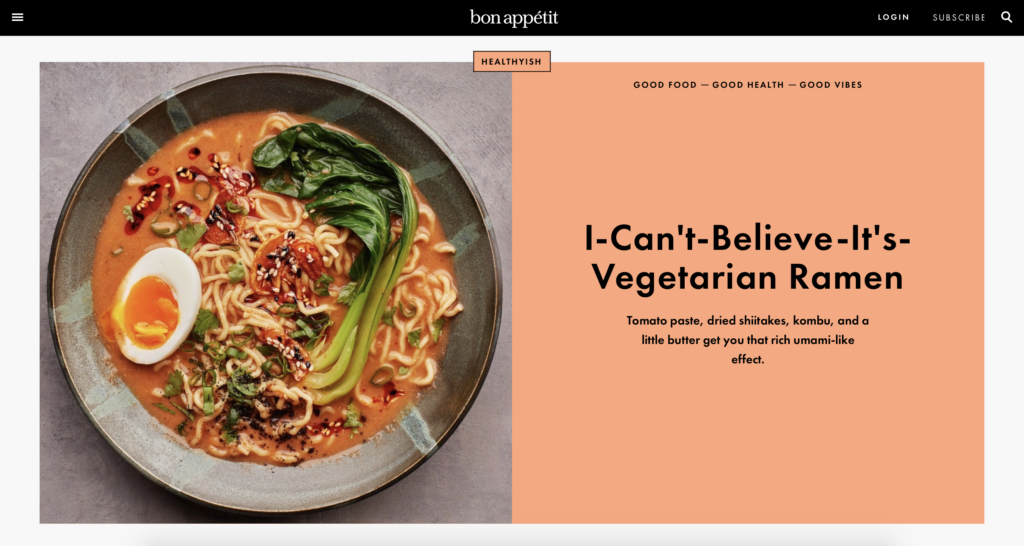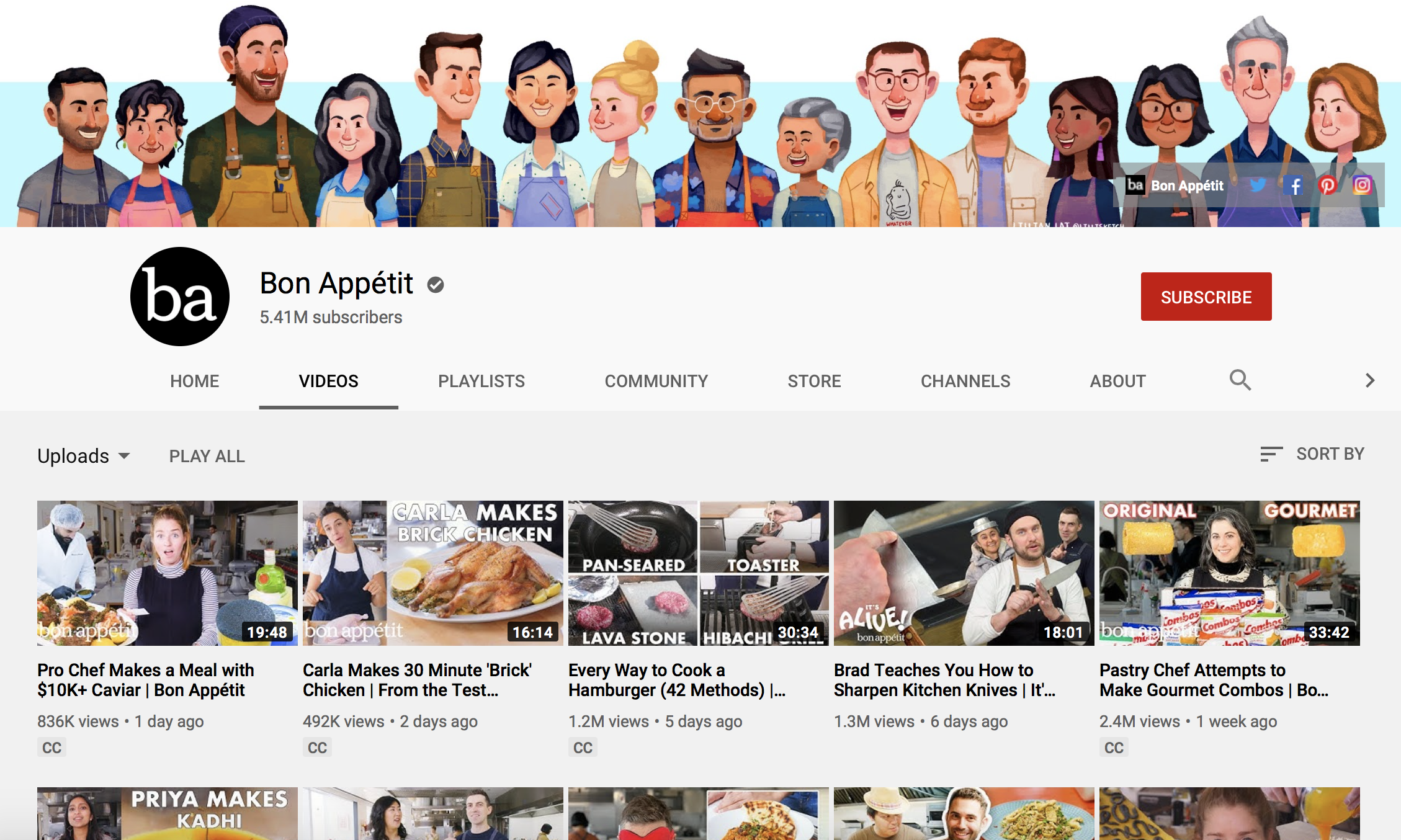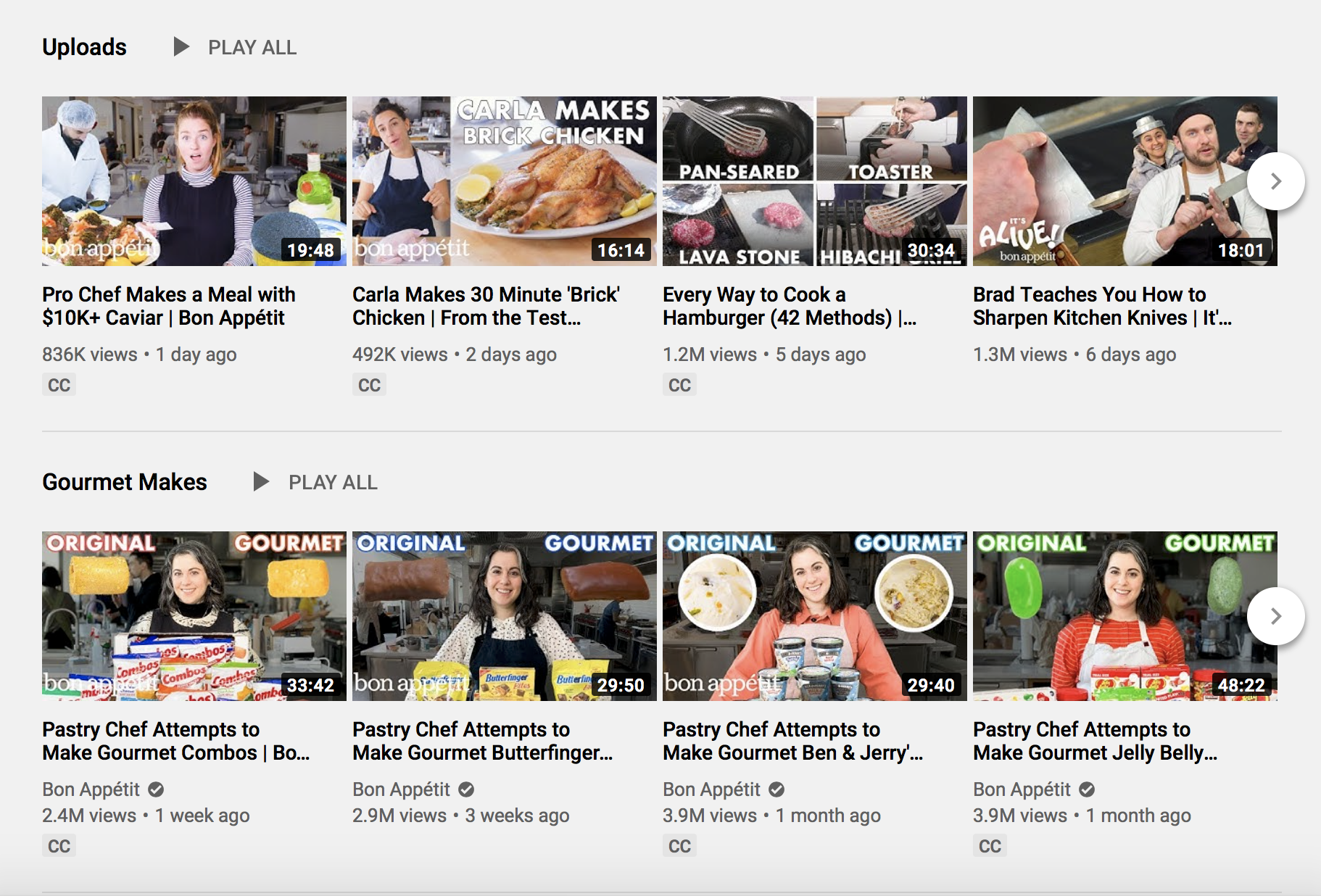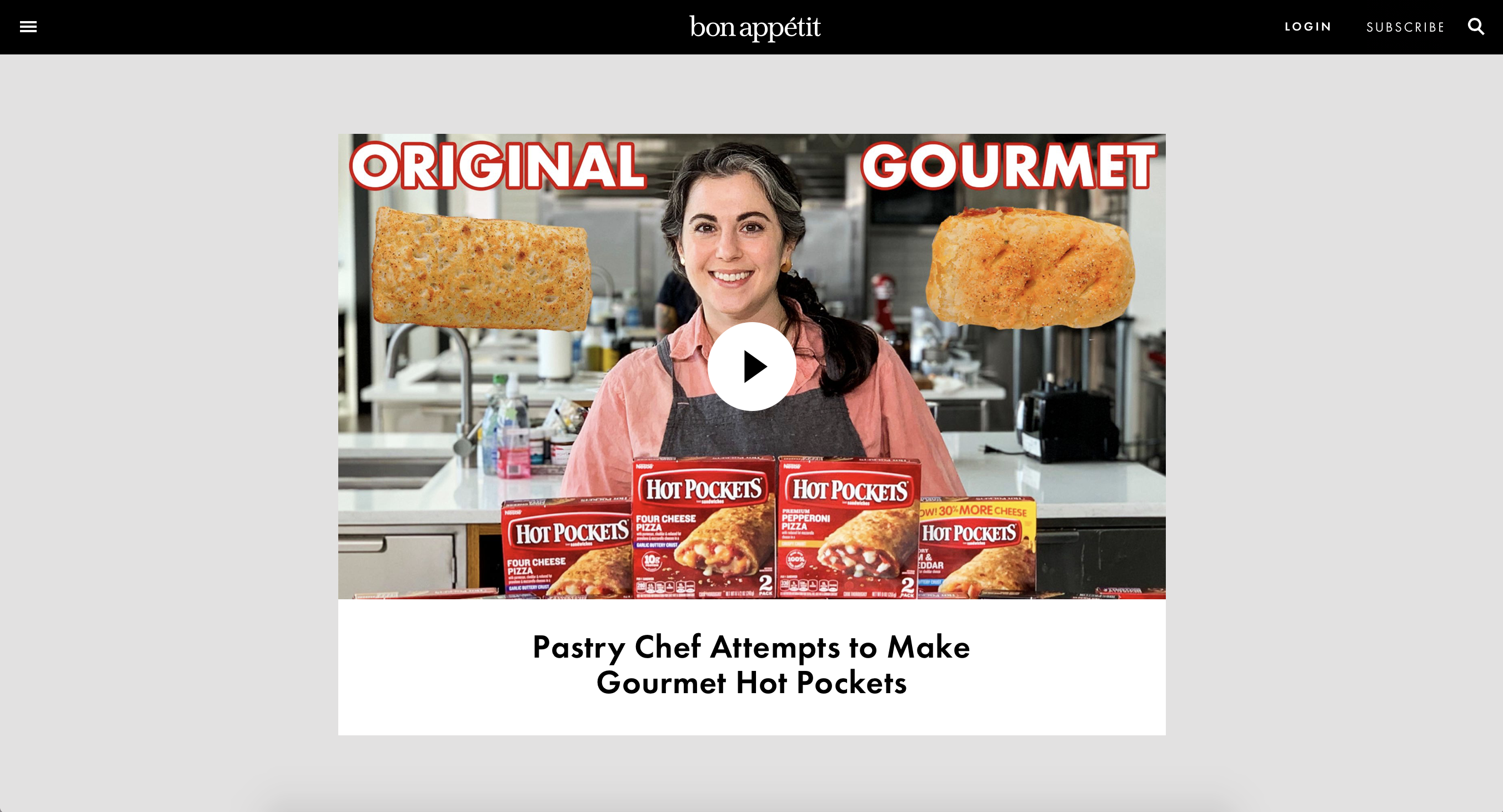
For me, it was easy to settle on a particular context in my life where I feel influenced by my environment — what I turn to in my free time, which is almost invariably Youtube.
Looking at my homepage, I’ve noticed that the vast majority of videos I encounter place people at the front and center in thumbnail pictures. This is true regardless of the video’s topic. I think they definitely plant some subconscious expectation that I, the viewer, will model my viewing experience and emotions off of the ones displayed in the thumbnail. On the one hand, I’ve grown accustomed to and more wary of the video thumbnails that are “click-baity” and over-exaggerated, but in its more subtle forms, it’s still a tactic that works on me more often than I’d like to admit.
So my initial premise was to observe the ways that Youtube influences my viewing habits. But one channel in particular gets me to click over and over again, and not just on Youtube. For a while now, I’ve found myself entrenched in the multi-platform world of Bon Appetit, a food and entertaining magazine, despite the fact that I’ve attempted no more than three recipes from the hundreds and hundreds that are published on their website.
![]()

![]()
I was first introduced to Bon Appetit in middle school, when their food-based narratives, tantalizing photography, and playful layouts made their monthly magazines a part of my daily routine. From late middle school all the way through high school, I would flip through a Bon Appetit magazine in the morning as I ate breakfast. I would dog-ear pages so I could beg my mom to make a dish, convinced by stories of convivial, effortless feasts held in beautiful locations that cooking, and cooking well, was easy. In their print magazines, the tone of their editorials and the saturated photography contribute to a sense of culinary indulgence and desirability that I really, really wanted (my mom) to emulate.
![]()
In college, I turned to the magazine’s digital content. My friend sat me down for an “It’s Alive” episode on Youtube, where Bon Appetit’s Test Kitchen staff member Brad Leone made dishes by experimenting with fermentation. He’s still one of my favorite people to watch on the channel. One of my recent recommended videos featured fellow Test Kitchen member Molly Baz in the thumbnail for a “Pro Chef Makes a Meal with 10k+ Caviar”, a video clicked on and watched solely because Molly is funny. I don’t really care about caviar and I don’t plan on cooking with it anytime soon, either. But I’ll definitely watch (and probably like) a video based on the personality helming it, a tendency which Bon Appetit is very aware of in their audience. The chefs are always featured in the foreground, while the food can show up in either foreground or background.
![]()

![]()
I’m also subscribed to the channel, which releases content at a rate of roughly five new videos per week, keeping me in the loop regardless of when I last watched a video from them. Going into the description of the video will also display their recent line of merchandise, as well as link me to their website, which flip-flops between being my third and fourth-most visited site (Youtube is, unsurprisingly, the first). And visiting their website will in turn redirect me to their Youtube channel, as it’s currently featuring an episode of Claire Saffitz’s “Gourmet Makes”, one of the brand’s most popular Youtube series.
![]()

![]()
There’s so much of this content-crossover type marketing, and at least in regard to me, it’s been really effective at securing viewership and brand loyalty. I watch a number of their videos, can identify several Test Kitchen staff by voice alone, and have an often updated but seldom actualized folder of bookmarks where I save recipes almost exclusively from Bon Appetit. And over the past couple years, I’ve come across more and more people who are either familiar with or actively fans of the magazine in its myriad permutations.
![]()
I think what’s really interesting about Bon Appetit is this sense of accessibility they project. In reality, it’s not always easy to follow their recipes or advice. Some of their dishes call for really specific, sometimes expensive ingredients. I remember admiring some of the ceramics they featured in a spread, only to look at the prices and find all of them to be in the $50-$250 range. Not a lot of people are capable of buying into their core products/lifestyle recommendations, but they’ve found different ways to make their content appealing and approachable over the years. It’s just so easy to read about or look at food and get vicarious enjoyment through them without any of the effort that goes into making it, and the marketing team at Bon Appetit has employed various persuasive tactics to enhance and extend this experience across platforms.



